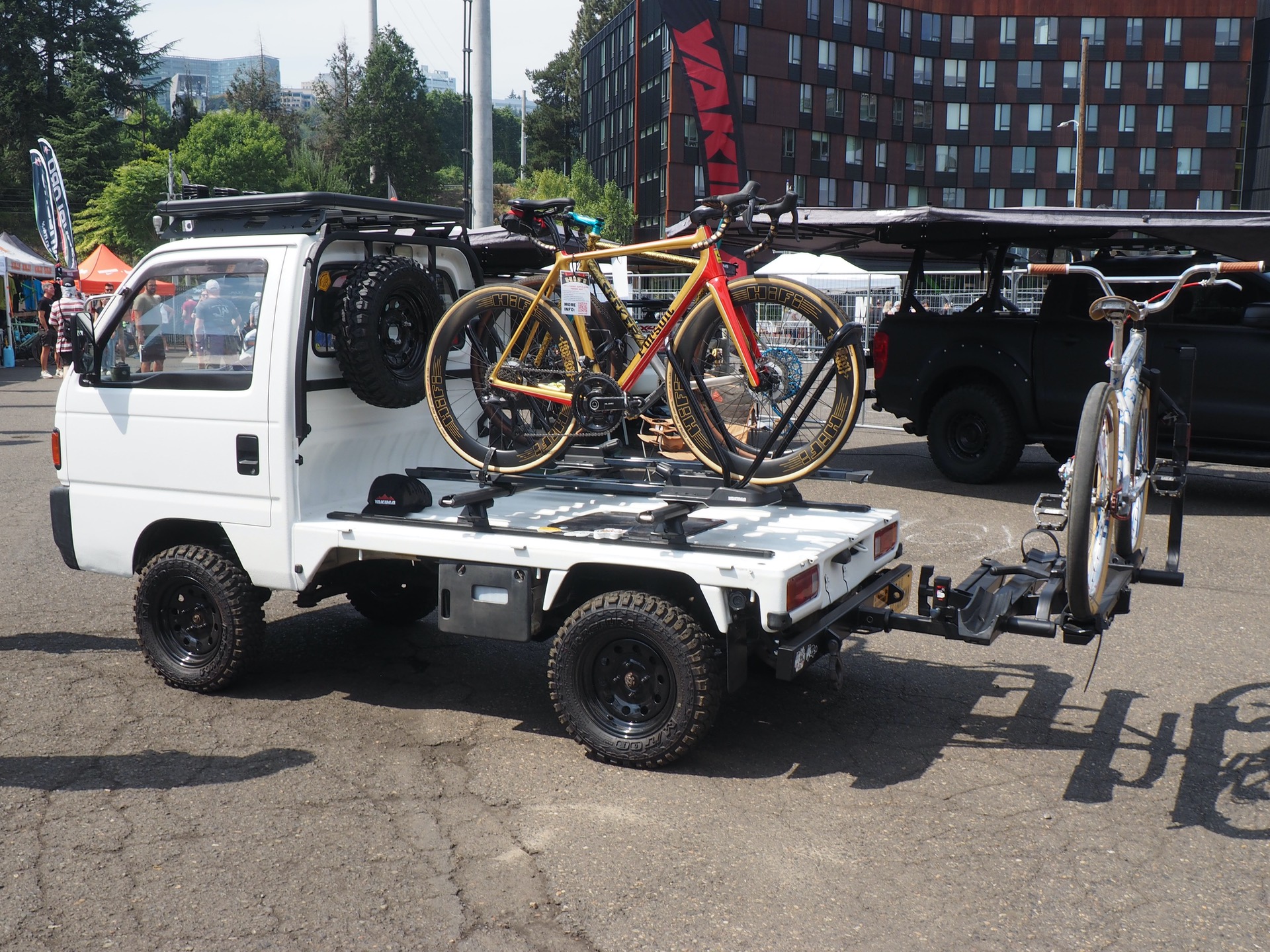Cunningham Indian mountain bike
Mike Varley of Black Mountain Cycles explains some of the finer points of restoring a rare Cunningham mountain bike.

Vintage bike restoration can take two very different paths. Some restore a bike with the goal of creating a perfect, new again, bike complete with NOS (new old stock) parts, a fresh paint job, and newly reproduced decals. Others restore a bike by stripping the bike down to the frame, cleaning years of dirt and grime from the parts and frame, and rebuilding the bike creating a battle-worn bike ready to ride and relive the days when you discovered the joy of riding.

Before frame restoration.
Much like the reasons to stave off the aging process with plastic surgery or embracing old age with a big ole middle finger, the reasons to choose one restoration method over the other are very personal.

After frame restoration.
When restoring a Cunningham bike, the choice of repaint or simply clean the frame is a somewhat moot point. With very few exceptions, the aluminum framed Cunninghams were delivered to the customer au naturel – the bare aluminum exposed in all its lustrous aluminum glory. And exposed to the elements.

The Cunningham Indian model was Charlie’s way of honoring the people who were part of the original inhabitants of the land where we now live.
The bare aluminum frame was one of the unique features of a Cunningham. Like the constructeur bikes of France, the Cunningham was the constructeur bike of the American mountain bike scene. Not satisfied with commercially available parts, Mountain Bike Hall of Fame charter member, Charlie Cunningham created a bike for the customer in his vision of how a mountain bike should perform.

Roller-cam brakes on a Type II fork hug the legs for minimal flex during braking.
Unique features designed and made for the Cunningham bike include: dropouts cut by hand and relieved for lower weight; all “braze-ons” made in house and bonded/riveted to the frame to avoid additional heat from welding; brakes designed for increased power and better modulation; hubs created to eliminate dish and fit in wider-spaced dropouts – 140mm for the rear and up to 118mm for the front; press-fit bottom brackets that allowed grease to be injected into the bearing while purging out the old grease at the same time, without removing any parts; stems and seat-posts made to optimize fit: The list of Cunningham features and innovations could go on and on, but that’s just an inkling of the features and advantages of owning and riding a Cunningham.

Removable faceplate stem from the early/mid-80s before they were commonplace.
It’s no secret that, today, a Cunningham bike is valued at double or more than their original selling price – and they were among the most expensive at the time. With few exceptions, bikes don’t typically increase in value over time. And they certainly don’t double in price. When restoring a bike like an ‘80s road racing bike, if parts are worn out or beyond bringing back to a serviceable life, you can find plenty of parts on Ebay at reasonable prices. Are your Campagnolo Record hubs beyond their service life? There will be a set on Ebay. If you need a set of appropriate hubs for your Cunningham, you may wait years to find a set. The good news is the parts that were installed on the Cunningham bike were designed for an incredible long life of service and likely will likely only require removing cleaning and reinstalling.

Grease Guard ports on the hub.
Several years ago, Charlie Cunningham investigated best practices to clean and protect his frames. The same method could also be employed to any bare aluminum frame. With the frame stripped bare of parts and all dirt cleaned off as you would during any bike cleaning, the frame is scoured with a very fine grade Scotch Brite #7447 pad with Fluid Film. This process removes any corrosion and oxidization and leaves the frame with a light protective coating. The final step is to wax the frame. Any liquid wax would likely work, but for this application, I use NuWax because it lasts a long time and is cheap. The wax is applied with a white, super fine Scotch Brite #7445 pad and then buffed off with a clean rag. This whole process leaves the frame with a fresh, milky silver finish, a far more desirable finish than the super-high polish of some aluminum frames.

Clean grease purged out of the bottom bracket bearings shows that only clean, new grease is present in the bearings.
With a little over 180 Cunningham bikes produced since the early ‘80s, it’s highly unlikely that this info has real relevance to the average bike aficionado. But like reading stories of restoring classic motor cars appeals to the car nut, restorations of classic bikes holds great interest to bike nuts. And what’s a good restoration story without photos?

Road rear derailleurs were not uncommon on race oriented mountain bikes in the ‘80s.
I’ve had the fortune of working on, restoring, and simple maintaining many Cunninghams over the years. I estimate that at least 30 of them have passed through my workstand. Each one is unique and has its own personality. Photographs in this article are of two early Cunninghams, #28 and #33, that recently got the full tear-down and rebuild. They are no trailer queens, but are bikes proud of their battle scars and still ready to ride many more miles.
Visit cunninghambikes.com for more information about Charlie and his work. Recently, Charlie Cunningham was seriously injured in a bicycle crash, and his family is taking donations to help meet his medical expenses at this page.
All photos: Mike Varley/Black Mountain Cycles
Scotch-Brite is a registered trademark of the 3M Corporation. FluidFilm is a registered trademark of the Eureka Chemical Company.


